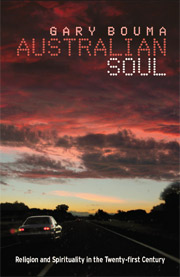Book contents
- Frontmatter
- Contents
- Tables and Figures
- Preface
- Acknowledgements
- 1 Introduction
- 2 Qualities of Australian religion and spirituality
- 3 Quantities of Australian religion and spirituality
- 4 Spirituality and cultural change
- 5 The changing social location of religion and spirituality
- 6 The mainstream: From Christendom to comfortable on the margins
- 7 Religion and spirituality respond to change
- 8 Religion, spirituality and Australian social policy
- 9 Signs of hope in the twenty-first century
- Further reading
- References
- Index
6 - The mainstream: From Christendom to comfortable on the margins
Published online by Cambridge University Press: 05 June 2012
- Frontmatter
- Contents
- Tables and Figures
- Preface
- Acknowledgements
- 1 Introduction
- 2 Qualities of Australian religion and spirituality
- 3 Quantities of Australian religion and spirituality
- 4 Spirituality and cultural change
- 5 The changing social location of religion and spirituality
- 6 The mainstream: From Christendom to comfortable on the margins
- 7 Religion and spirituality respond to change
- 8 Religion, spirituality and Australian social policy
- 9 Signs of hope in the twenty-first century
- Further reading
- References
- Index
Summary
The emerging picture of Australia's religious and spiritual life shows continued vitality coupled with substantial change caused by cultural processes and changes in its social location. The religious and spiritual responses to these changes can be examined under four basic processes: religious revitalisation, fundamentalisation, innovation and marginalisation. These processes are often examined separately, rather than being seen as a complex of overlapping, interacting and, at times, contradictory processes. Marginalisation will be examined in this chapter and the more innovative responses in chapter 7.
One response to social and cultural change has been for churches – many of them once in the mainstream – to become marginalised. The marginalisation of organised religion is one of the themes in the secularisation literature (Beckford 2003: 30–71; Bruce 1996; Martin 2005). As religion has moved, or been moved, to the sidelines, it has also become a private matter for individuals to decide whether and to what degree they should be involved. Societies and governments came to take less interest in the patterns and forms of the religious observance of their citizens. Much has been made of the marginalisation and privatisation of religion in the last two hundred years with the rise of secular society (Martin 1978; Gilbert 1980; Millikan 1981; Wilson 1966, 1982; Wilson 1983). This discussion has largely focused on once-major Protestant denominations and Anglicans, but has some application to Catholics as well.
- Type
- Chapter
- Information
- Australian SoulReligion and Spirituality in the 21st Century, pp. 129 - 142Publisher: Cambridge University PressPrint publication year: 2006



